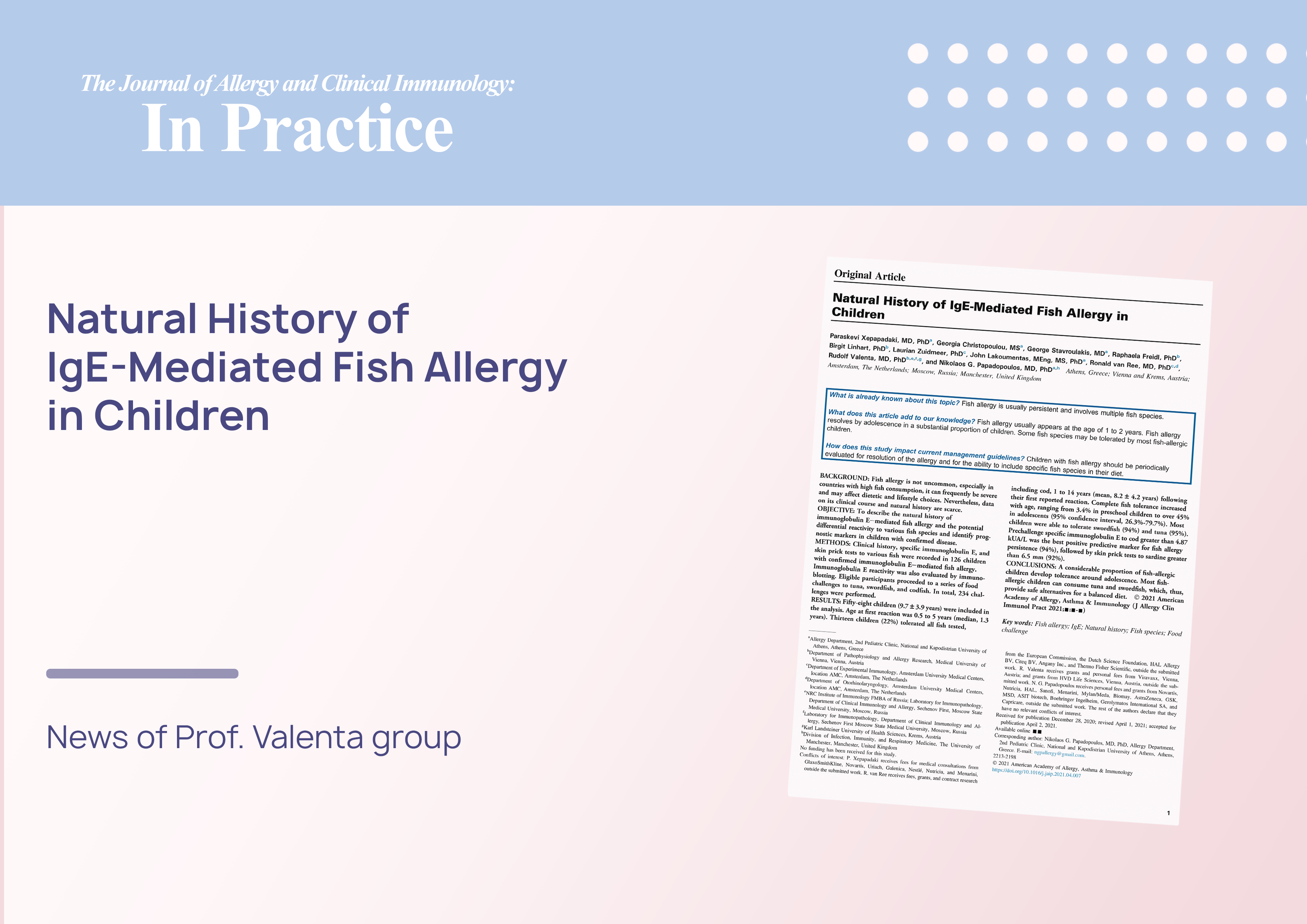Natural History of IgE-Mediated Fish Allergy in Children
Xepapadaki P, Christopoulou G, Stavroulakis G, Freidl R, Linhart B, Zuidmeer L,
Lakoumentas J, van Ree R, Valenta R, Papadopoulos NG. J Allergy Clin Immunol Pract.
2021 Aug;9(8):3147-3156.e5.
doi: 10.1016/j.jaip.2021.04.007. Epub 2021 Apr 15
Background
Fish allergy is not uncommon, especially in countries with high fish consumption, it can frequently be severe and may affect dietetic and lifestyle choices. Nevertheless, data on its clinical course and natural history are scarce.
Objective
To describe the natural history of immunoglobulin E–mediated fish allergy and the potential differential reactivity to various fish species and identify prognostic markers in children with confirmed disease.
Methods
Clinical history, specific immunoglobulin E, and skin prick tests to various fish were recorded in 126 children with confirmed immunoglobulin E–mediated fish allergy. Immunoglobulin E reactivity was also evaluated by immunoblotting. Eligible participants proceeded to a series of food challenges to tuna, swordfish, and codfish. In total, 234 challenges were performed.
Results
Fifty-eight children (9.7 ± 3.9 years) were included in the analysis. Age at first reaction was 0.5 to 5 years (median, 1.3 years). Thirteen children (22%) tolerated all fish tested, including cod, 1 to 14 years (mean, 8.2 ± 4.2 years) following their first reported reaction. Complete fish tolerance increased with age, ranging from 3.4% in preschool children to over 45% in adolescents (95% confidence interval, 26.3%-79.7%). Most children were able to tolerate swordfish (94%) and tuna (95%). Prechallenge specific immunoglobulin E to cod greater than 4.87 kUA/L was the best positive predictive marker for fish allergy persistence (94%), followed by skin prick tests to sardine greater than 6.5 mm (92%).
Conclusions
A considerable proportion of fish-allergic children develop tolerance around adolescence. Most fish-allergic children can consume tuna and swordfish, which, thus, provide safe alternatives for a balanced diet.




